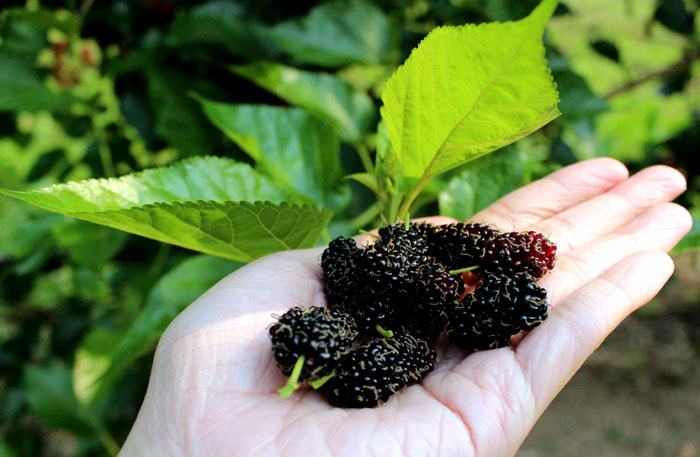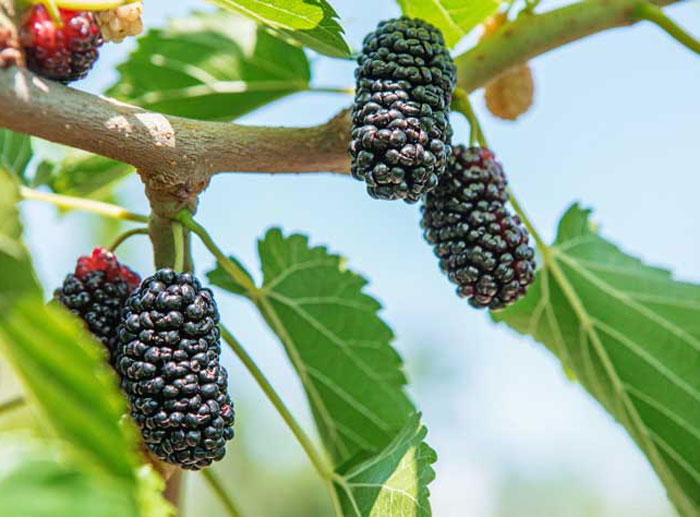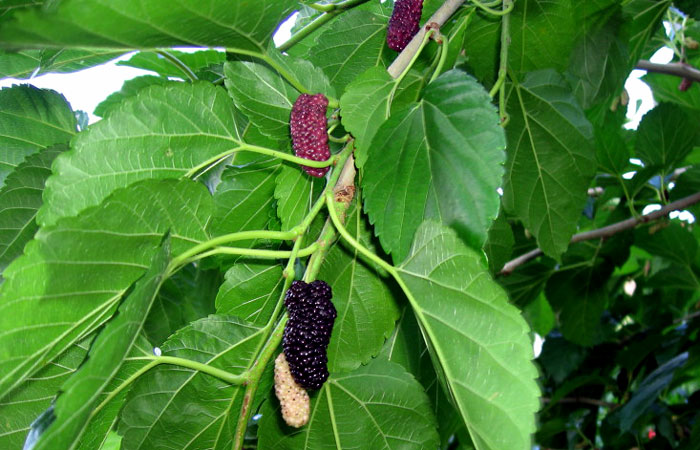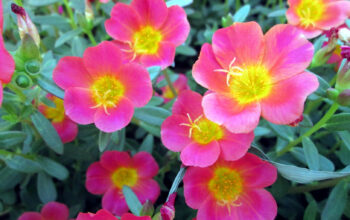Mulberry
Learn How to Grow Mulberry, Growing Mulberry tree in containers, Mulberries care, Pests problem, and more about this plant. Mulberry trees are fast-growing deciduous trees, which grow to 20 -60 feet height depending on the species. This mulberry fruit is harvested late in the spring or summer. Morus like right sunlight and well-drained soil, they do not require much maintenance. Most people propagate their trees through its seeds, but in the late spring you can propagate with softwood cutting, this propagation is very fast.
Growing Habitat
Mulberry grows faster and its leaves are optional, simple, lobed and undivided with trees. On a mulberry plant, there are male and female flowers and male and female flowers on separate plants. Many of its trees are self-pollinated. The fruits of mulberry are ripened in Midsummer, small fleshy, and tightly ripened like a blackberry. Newly planted trees start giving fruit in 2-3 years. Fruit color from white to lavender red and dark purple color.
These trees can be grown not only in the temperate regions but also in the tropical and sub-tropical regions. That is why this tree is very widely available in the Asian region. Many people like to develop it in small containers too. Morus trees are suitable for growing in the USDA hardiness zone 4 – 9.
Mulberry tree overview
Scientific Name Morus
Common Name Mulberry
Plant Type Fruit tree
Sun Full Sun
Soil Well-drained, loamy rich soil
Soil pH 6.2-6.8
Zone 4-9
Common Name
Mulberry, Russian Mulberry, Silkworm Mulberry, Shahtoot in Hindi.
Habitat
Morus usually grows in old areas, roads, forest edges, urban environments, and other turbulent areas. It grows well in natural forests, planted forests, grasslands, turbulent and urban areas.
How to grow Mulberry tree
Soil and location
Morus likes well-drained, loamy rich or any mixed soil, Which is a bit acidic or neutral in the pH.
Use such soil which is full of manure. You can plant it in the month of spring to Full sun to partial sunshine place. However, these trees bear poor conditions of soil, but by compost, you can improve the soil and produce good fruits.
Propagation
Mulberry trees can usually be planted by seeds, cutting, or graft. As many other tree species including apples, it is not true to plant it by seeds. A softwood cutting is an easiest and reliable propagation during the growing season.
Watering
These plants need regular water, but they cannot tolerate wet soil. This plant requires 1- inch of rain per week during the first year, and if the weather is dry, then you need to water them. After the plant is established, they do not need water except the warm climate.
Pollination
Cross-pollination is allowed, then the gardener can make more yields, although many monoecious types do not require cross-pollination. Some mulberry types can produce fruit even without pollination. Read more.
Feeding
Morus requires a little fertilization in the initial period. When planting new trees, it is beneficial to feed the planting hole with 20 – 30 L compost and repeat feeding it in early spring in the first two years of the beginning.
The growing Mulberry tree in containers
- You can easily grow dwarf species of this plant in the container. For this, you choose a large size pot of 14-20 inches. But in the beginning, you should develop it in a 10-12 inch container, and later transplant it in a large pot.
- To grow Morus trees in the container, use rich soil or commercial potting soil, add rich manure in your soil and send. Keep in mind water stopping damage your plant.
- Now fill your container with commercial potting mixture. Add a handful of perlite or sand in your mix. It will improve drainage. But before that make sure containers have a drainage hole in the bottom or not.
- Wetting the potting mixture with water thoroughly, leave the container for a while until the potting mixture is uniformly moist, but not water dripping.
Planting cutting in containers
- Cut the healthy stems of about 4 to 6 inches in length. Use sharp knives to avoid damaged tissue of the cutting. Each cut is just above the node of the leaf, where a leaf or bud appears to emerge in the stem.
- To prevent the spread of diseases among plants, use the cutting blade or knife you use to clean the cloth or paper towel with rubbing alcohol.
- Remove blossoms, buds, and leaves from the bottom part of the cutting. Now immerse the lower part of your cutting into a liquid rooting hormone.
- Now make planting holes in your container, and put several stems safely in the same container. Keep the soil firmly around the cutting so that they stay straight.
- Cover your container with clear plastic. By which the plant can get adequate moisture and heat and good germination
- Keep the container in bright but indirect sunlight, avoid direct sunlight.
- Regularly check the potting mixture, if the mixture is dry, then mist from the spray bottle inside the bag.
- Check the roots after 3-4 weeks, and when the roots become almost 0.5 inches long, remove the plastic sheet. Keep the young plant in cooler-dry air for 4-5 days.
- Fill 1-gallon containers with commercial potting soil, and plant every young plant gently. Place your pot in indirect sunshine and keep the soil moist. When the weather gets hot in spring then keep your young plants outdoors. Read more.
Pruning Mulberry tree
Bleed is flowing while mulberry branches cut, so avoid heavy sorting, remove dead stems, and inward-growing branches.
Harvesting
Typically, after the planting, the mulberry tree starts to produce fruits in 8-9 years. The main time to choose fruit is between August and September. Best of all, taste the fully ripe mulberry fruit, then choose it. You can collect mulberry fruit by spreading a bed sheet on the ground, shaking the branches above. Read more.
Types of mulberry trees
There are three types of Morus trees, their brief description is given below.
Black Mulberry – These are the most delicious blackberries (mulberry), and are native to Western Asia.
Red Mulberry – They are slightly harder than black mulberry. Red Mulberries are native to North America, these are found in rich soil and the banks of the rivers.
White Mulberry – White Morus trees came from China, which was introduced to the production of silkworms in the US. However, it can be hybridized with natural and native red mulberry. Read more.
Pests and diseases
Mulberry trees are affected by some diseases and pests. However, I never saw these plants suffer from major problems. It can usually be mildew, leaf spot, and root rot problems. But with proper drainage, you can stop the root rot. In general, insects can damage such as thrips, whiteflies, mealybugs. However, getting rid of them is easy. It sometimes damaged by deer.
Read also: Growing Sweet corn in containers. How to grow Dahlia plants. Growing and caring Easter Cactus. Fiddle leaf growing and caring tips. Impatiens growing and caring tips. Potatoes growing in containers. Michelia Champaca growing and caring guide. Blue Chalk Stick growing and caring tips. Container gardening. Spring Onion growing and caring guide. Poinsettia growing and caring in containers.
Happy Gardening
For pin







